

On the last stop on their road trip through California, Maria Bustillos and Elizabeth Fladung discuss inequality and gentrification in San Francisco, heart of the tech industry and one of the most unequal cities in the country.
![]()
This podcast is an encore posting from our State of Inequality series.
Maria Bustillos is a journalist and critic living in Los Angeles.
Elizabeth Fladung is a Brooklyn-based, CalArts-trained photojournalist. Her work has appeared in The Nation, La Repubblica, The Fader and Wax Poetics Magazine.
» Read more about: Podcast: 'Disruptors' and Gentrification »
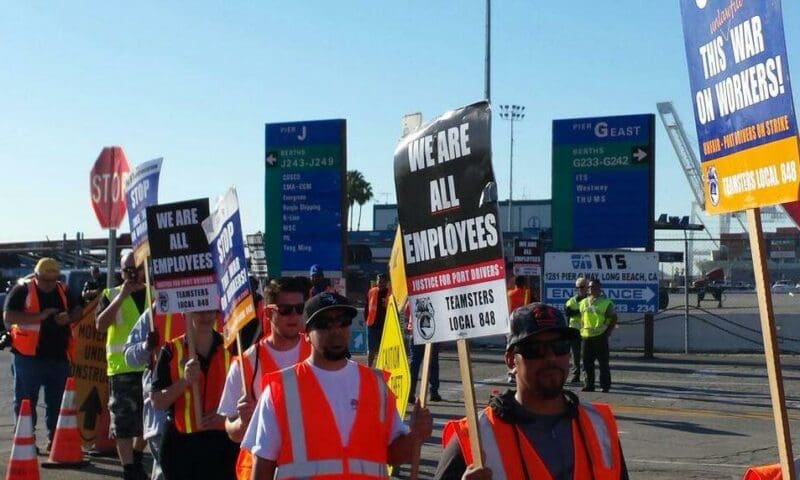
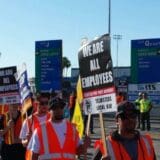
As the strike by a couple hundred harbor truck drivers enters its third day, work stoppages have spread to a Union Pacific rail yard located in Lincoln Heights, just east of downtown Los Angeles. A rally will be held there today, Wednesday, April 29, to protest the theft of the drivers’ wages by port hauling firms. It takes place 2:30-4 p.m. at the Union Pacific Railroad Trailer and Container Intermodal Facility, 1041 Richmond Street.
At the heart of the dispute is the continuing fight of short-haul drivers to be classified as company employees by the trucking firms they work for. Currently, most drivers are considered “independent contractors,” a job category that denies the drivers basic labor benefits and rights, while placing on them the costly burden of paying for the maintenance, fuel and insurance for their vehicles.
On Monday, drivers for Pacific 9 Transportation, Intermodal Bridge Transport,


Maria Bustillos and Elizabeth Fladung debrief their day reporting on inequality in Silicon Valley, including their experiences visiting with some groups and leaders helping local people left out of the tech boom.
![]()
This podcast is an encore posting from our State of Inequality series.
Maria Bustillos is a journalist and critic living in Los Angeles.
Elizabeth Fladung is a Brooklyn-based, CalArts-trained photojournalist. Her work has appeared in The Nation, La Repubblica, The Fader and Wax Poetics Magazine.
» Read more about: Podcast: Silicon Valley's Stark Contrasts »
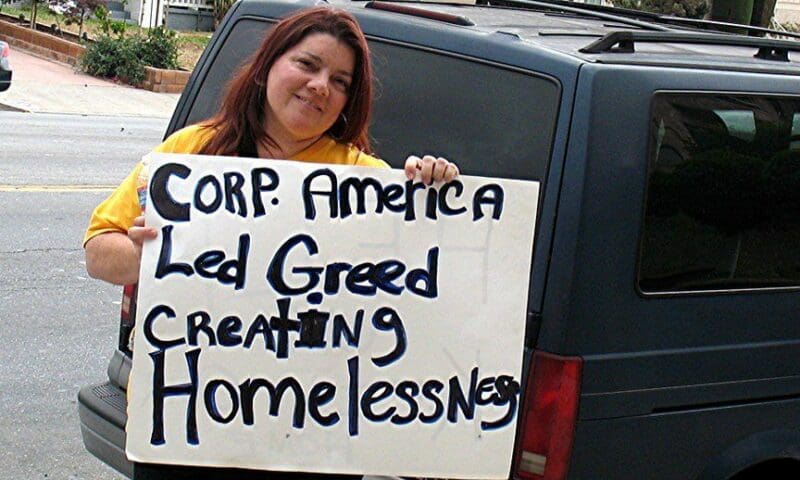

For Catherine Green, home for the last three decades has been a comfortable apartment in the sprawling 43-unit Boulevard Villa near Crenshaw and Venice boulevards in Mid-City Los Angeles. Her alert gaze, energetic demeanor and perfect posture give no hint of a life that’s spanned 90 years. “I was one of the first people to move in here,” she says with a strained smile. “I’ve seen ’em come, and I’ve seen ’em go. This is my community, my village.”
Tanya Rhodes, a retired nurse, and her disabled daughter also call this place home, and have done so for the last 22 years. Louis Gates, a sturdy man with a steely glare, is a Vietnam vet who relocated here five years ago. Between nervous puffs on a cigarette, he expresses how happy he was when he moved in, and says sadly, “I thought this was going to be the last place I would move into.” If the winds of fortune do not change soon,
» Read more about: As L.A.'s Rents Rise: Crenshaw Tenants Battle Eviction »


The day after undergoing complicated surgery for pancreatic cancer, a friend’s 76-year-old-husband became combative and aggressive while being cared for in an Intensive Care Unit. He stood up, tore out his IV and nasal gastric tubes, and pushed the nurse who had come to get him to lie down. Eventually he had to be tied down to his bed with hand and foot restraints because he was kicking and thrashing about – even kicking his wife in the stomach. Not the type of scene we expect in an ICU.
For nurses these days, however, it seems that assaults and acts of violence have become part of the job. According to Christy McConville of the United Nurses Associations of California, workplace assaults are now being captured on video and shared on social media, creating a new awareness of the problem.The federal Bureau of Labor Statistics reports that violence against hospital workers is nearly five times greater than against average workers in all other employment categories combined – and it seems to be rising.
» Read more about: Urgent Care: Protecting Nurses Against Workplace Violence »


Maria Bustillos and Elizabeth Fladung discuss their experiences reporting on the pervasiveness of food deserts in the midst of California’s food production heartland.
![]()
This podcast is an encore posting from our State of Inequality series.
Maria Bustillos is a journalist and critic living in Los Angeles.
Elizabeth Fladung is a Brooklyn-based, CalArts-trained photojournalist. Her work has appeared in The Nation, La Repubblica, The Fader and Wax Poetics Magazine.
» Read more about: Going Down Highway 99 Feeling Sad (and Hungry) »


The power of art to effect fundamental social change will be on display in Los Angeles this week as a major 10-day “pop-up” exhibit of visual art and accompanying performances, and workshops opens Friday at a former movie theater in the city’s Baldwin Hills neighborhood.
Called Manifest: Justice, the event will showcase over 250 works from more than 150 artists, along with 30 community events that focus on race and criminal justice reform, inequality, healthy communities and immigration reform. It is being produced with support from the California Endowment and Amnesty International.
Drawn from across the country, the list of participants includes such marquee artist-activists as the godfather of guerilla poster caricaturists, Robbie Conal, and Obama ‘HOPE’ agit-provocateur Shepard Fairey, as well as a host of up-and-coming street muralists and wheatpaste artists, inducling the likes of Tatyana Fazlalizadeh, Favianna Rodriguez and Jesse Hazelip. Also on hand will be big-league gallerists such as collagist-photographer Lyle Ashton Harris and painter-sculptor Eric Fischl.
» Read more about: 'Manifest: Justice' Art Show Explores Inequality and Reform »


Maria Bustillos and Elizabeth Fladung discuss a day spent exploring inequality in Bakersfield, “The India of the U.S.,” and a very interesting person they met along the way.
This podcast is an encore posting from our State of Inequality series.
Maria Bustillos is a journalist and critic living in Los Angeles.
Elizabeth Fladung is a Brooklyn-based, CalArts-trained photojournalist. Her work has appeared in The Nation, La Repubblica, The Fader and Wax Poetics Magazine.
» Read more about: Podcast: Hope and Hopelessness in Bakersfield »


 In The Public Interest made a big splash a few years ago with our report that showed many private prison contracts include a “lockup quota,” also known as a bed guarantee, which ensures high levels of taxpayer funds go to corporations even when prison populations decline. When states agree to 80 percent, 90 percent or even 100 percent occupancy guarantees, policymakers are disincentivized from the kind of sentencing reform we desperately need to pass.
In The Public Interest made a big splash a few years ago with our report that showed many private prison contracts include a “lockup quota,” also known as a bed guarantee, which ensures high levels of taxpayer funds go to corporations even when prison populations decline. When states agree to 80 percent, 90 percent or even 100 percent occupancy guarantees, policymakers are disincentivized from the kind of sentencing reform we desperately need to pass.
But the federal government is currently giving a different kind of guarantee to prison companies, one that not only guarantees profits but doesn’t make us safer. It’s known as the “Immigrant Detention Quota” and it’s helping make GEO Group and the Corrections Corporation of America (CCA) a lot of money. According to a new report from Grassroots Leadership, the two largest private prison companies in the U.S. now run 70 percent of the ICE Detention System and are working hard to expand that share.
» Read more about: Jailhouse Shock: U.S. Fattens Profits of Private Immigrant Prisons »


Maria Bustillos and Elizabeth Fladung share their views about a trip to Palm Springs, land of mountains, casinos and trailer parks.
This podcast is an encore posting from our State of Inequality series.[divider]Maria Bustillos is a journalist and critic living in Los Angeles.
Elizabeth Fladung is a Brooklyn-based, CalArts-trained photojournalist. Her work has appeared in The Nation, La Repubblica, The Fader and Wax Poetics Magazine.
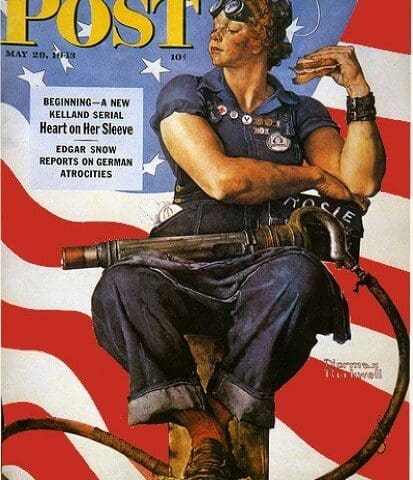
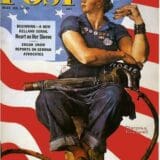
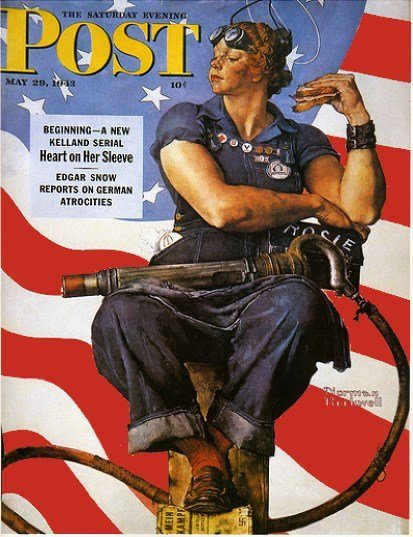 She was the perfect patriotic icon: Sassy yet dignified, brawny yet feminine – a massive rivet gun cradled on her lap, feet resting on a copy of Mein Kampf. And all the while she holds a sandwich as Old Glory ripples in the background. Mary Doyle Keefe, a Vermont telephone operator who posed for Norman Rockwell’s immortal Rosie the Riveter painting, first publicly seen on a 1943 Saturday Evening Post cover, died Tuesday at the age of 92. At the time of her brush with fame, Keefe was Rockwell’s neighbor and a little embarrassed that the artist had pumped iron into the painted arms of the petite 19-year-old.
She was the perfect patriotic icon: Sassy yet dignified, brawny yet feminine – a massive rivet gun cradled on her lap, feet resting on a copy of Mein Kampf. And all the while she holds a sandwich as Old Glory ripples in the background. Mary Doyle Keefe, a Vermont telephone operator who posed for Norman Rockwell’s immortal Rosie the Riveter painting, first publicly seen on a 1943 Saturday Evening Post cover, died Tuesday at the age of 92. At the time of her brush with fame, Keefe was Rockwell’s neighbor and a little embarrassed that the artist had pumped iron into the painted arms of the petite 19-year-old.
Rosie the Riveter had too much whimsy and restraint for it to fade into kitsch or agitprop oblivion. Like J. Howard Miller’s equally famous “We Can Do It!” poster, with which it is sometimes confused,
» Read more about: ‘Rosie the Riveter’ Model Dies — Rockwell Painting Owned by Walmart Museum »


Maria Bustillos shares her thoughts on our country’s failure to invest in higher education access and the mounting toll it is taking on students today.
This podcast is an encore posting from our State of Inequality series.


California’s Chamber of Commerce is best known for its Job Killers list, which the king of business lobbies uses to scare off state legislators from passing laws that might, among other things, protect workers from wage theft or force oil companies to pay extraction taxes. (In reality, the Job Killers list is more of a bill-killers list.) But the CalChamber isn’t all about killing. Last week it revealed its kinder, if not gentler, side in the form of a Job Creators list. (Who knew?) The lawmaking season is still young, but already the CalChamber has begun identifying bills that it claims will allow more Californians to enter the workforce.
* * *
It’s not entirely clear what jobs, if any, would be created by Corporate Democrat Adam Gray’s bill,


Elizabeth Fladung’s photos of San Francisco in the midst of the tech boom offer a study in contrasts.
![]()
This slideshow is an encore posting from our State of Inequality series.[divider]Elizabeth Fladung is a Brooklyn-based, CalArts-trained photojournalist. Her work has appeared in The Nation, La Repubblica, The Fader and Wax Poetics Magazine.


The religious spring festivals of Passover and Easter are behind us. We’ve paid our taxes. Congress has passed another bill to give the top two-hundredths of one per cent another windfall. I think a big-picture look at the structure of this economy might help us all take a deep breath. If my guess is correct, we’ll need it for the work ahead. This kind of economy stands on three legs: raw materials, cheap labor and as little regulation from government as possible.
Raw materials were the reason why Europe’s empires stumbled across the Western hemisphere in the first place. Looking for an easier route to the profitable spice markets of the East Indies, the Spanish found the West Indies and began a centuries-long exploration and exploitation of everything it uncovered. Extraction of natural resources – from tomatoes to gold to, one day, black gold – led those powers to exploit South and Central America as well as Africa,
» Read more about: Three Legs of the Economy: The Past Is Prologue »


[SlideDeck2 id=44878]
![]()
This slideshow of the University of California, Riverside is an encore posting from our State of Inequality series.
[divider]
Elizabeth Fladung is a Brooklyn-based, CalArts-trained photojournalist. Her work has appeared in The Nation, La Repubblica, The Fader and Wax Poetics Magazine.
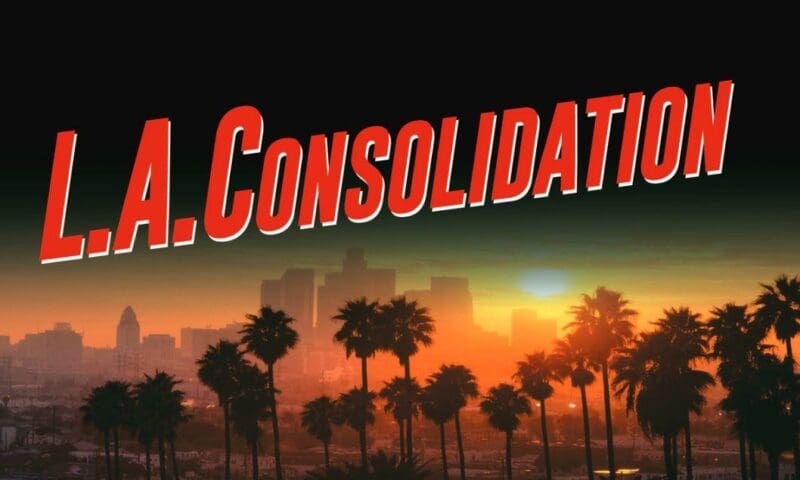

Fourteen months ago, media giant Comcast announced its plan to buy Time Warner Cable, a merger that would give one company control of 30 percent of television distribution and at least half of high-speed Internet distribution nationally. Here in L.A. County, Comcast would serve 96 percent of residents and, for 72 percent of those residents, it would be the only choice for broadband at speeds of 25 Mbps or faster. This level of national and local consolidation has brought together a broad range of consumer organizations, content creators, programmers and organizations representing diverse communities to oppose this merger. On April 14, these organizations came before the California Public Utilities Commission (CPUC) at a hearing in downtown Los Angeles to urge state regulators to say no to this deal.
Why is there such opposition? For starters, if the merger is approved Los Angeles residents are almost certain to face higher prices and anti-consumer policies that limit their access to content.
» Read more about: Why the Comcast-Time Warner Cable Merger Is a Bad Deal for Los Angeles »


[SlideDeck2 id=44608]
Trailers! Casinos! Sunsets! Photographer Elizabeth Fladung captures a metaphorical Palm Springs.
![]()
This slideshow is an encore posting from our State of Inequality series.[divider]
Elizabeth Fladung is a Brooklyn-based, CalArts-trained photojournalist. Her work has appeared in The Nation, La Repubblica, The Fader and Wax Poetics Magazine.
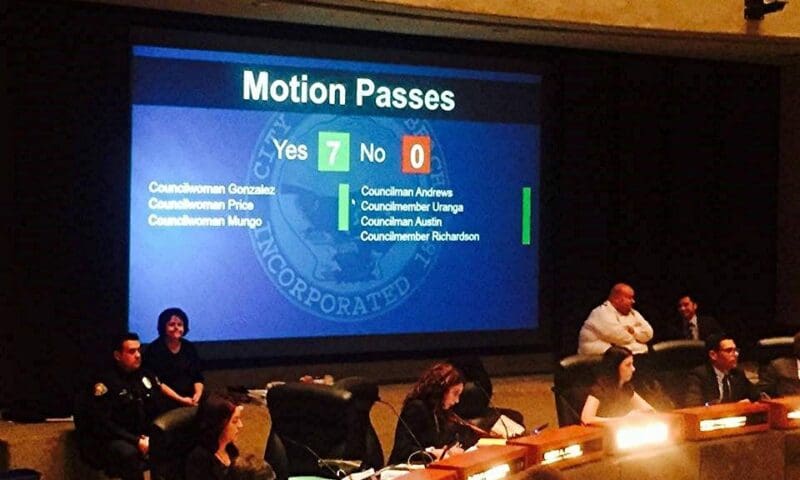
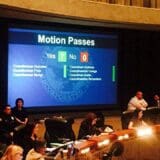
Last week the Long Beach City Council unanimously approved a citywide Project Labor Agreement, the first major initiative increasing standards on publicly funded construction projects and increasing access to apprenticeship programs for Long Beach residents. As the saying goes, “It was a long time comin’.”
For decades, community groups and construction trade unions advocated for greater accountability on public works projects to ensure contractors are paying prevailing wages and maximizing local dollars by providing career opportunities for local residents. According to our allies at the L.A. and Orange Counties Building and Construction Trades Council, advocates pushed for previous Mayor Bob Foster to consider a Project Labor Agreement policy but he didn’t budge. In fact, time and time again, the proposal sat on his desk during his eight-year tenure and never saw the light of day. A few victories were accomplished during the Foster administration, including an agreement on the Gerald Desmond Replacement Bridge.
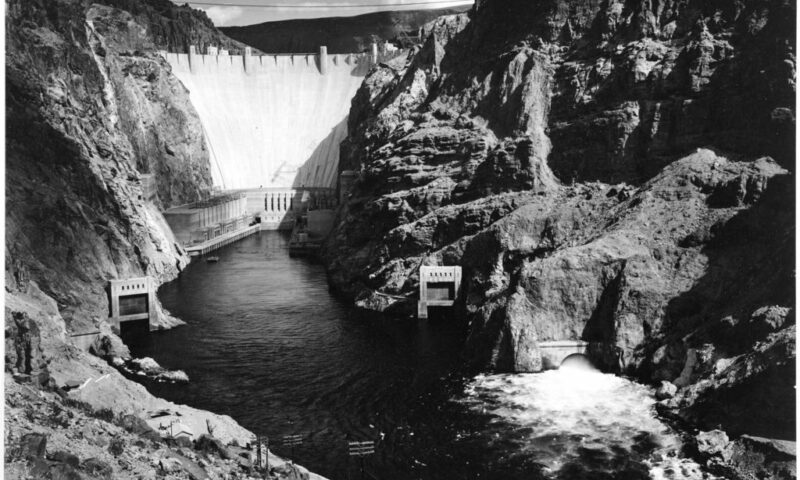

Remunicipalization is big word for a simple concept: It’s the process of bringing a formerly privatized service or asset back under public control. For residents and taxpayers, remunicipalization is often the logical conclusion after private water corporations fail to deliver on their promises. For corporations like Veolia and Suez that earn profits from taking over municipal water systems, remunicipalization is a major threat to their business model. And that threat is growing every year.
According to a new book from the Transnational Institute and other organizations, the rate of remunicipalization is “accelerating dramatically”:
“Over the last 15 years, 235 cases of water remunicipalization have been recorded in 37 countries, impacting on more than 100 million people. Moreover the pace of remunicipalization is accelerating dramatically, doubling in the 2010-2015 period compared with 2000-2010.”
City leaders and residents across the globe are reclaiming their water systems from private profiteers and ensuring that access to clean water remains a human right for every citizen.